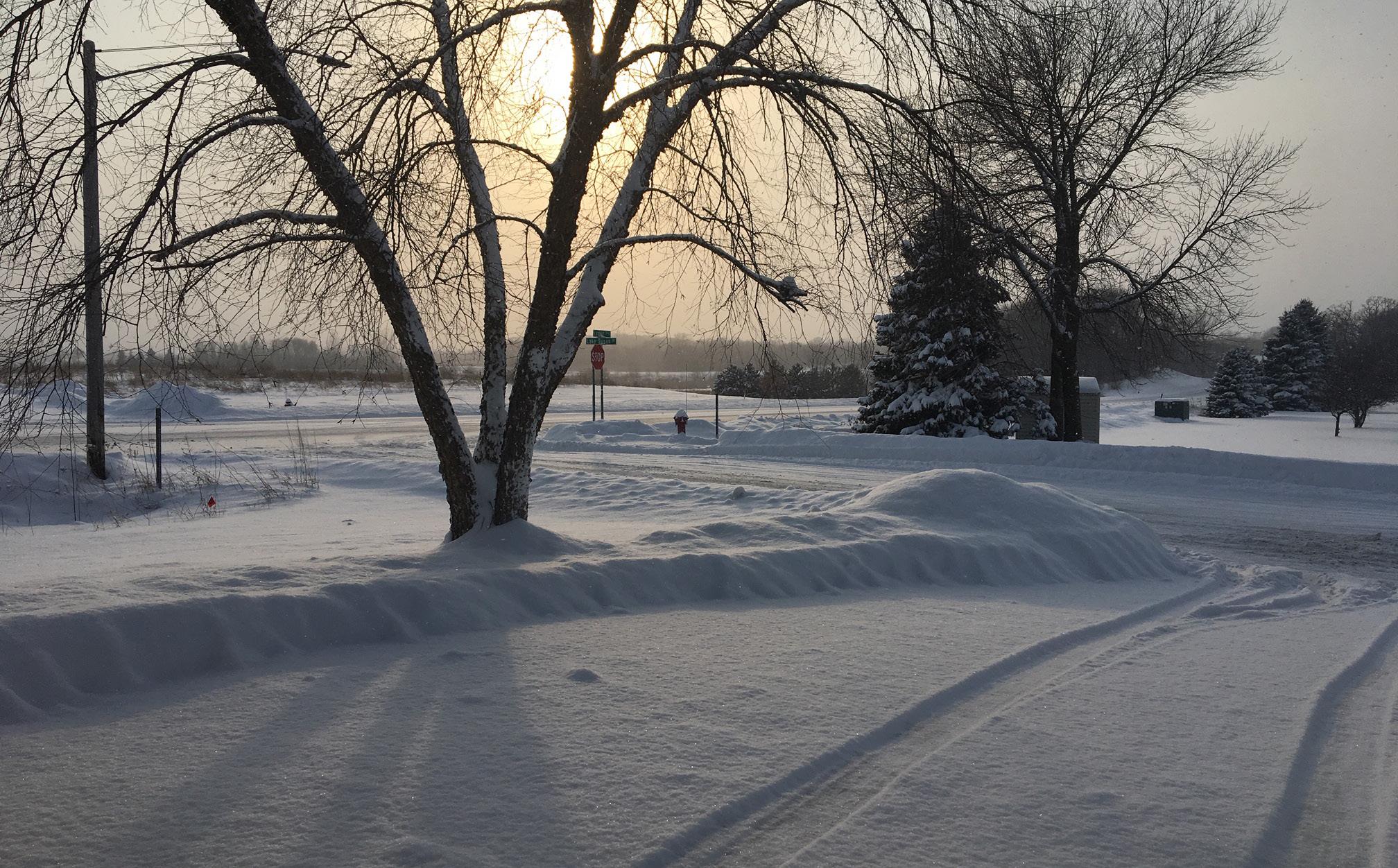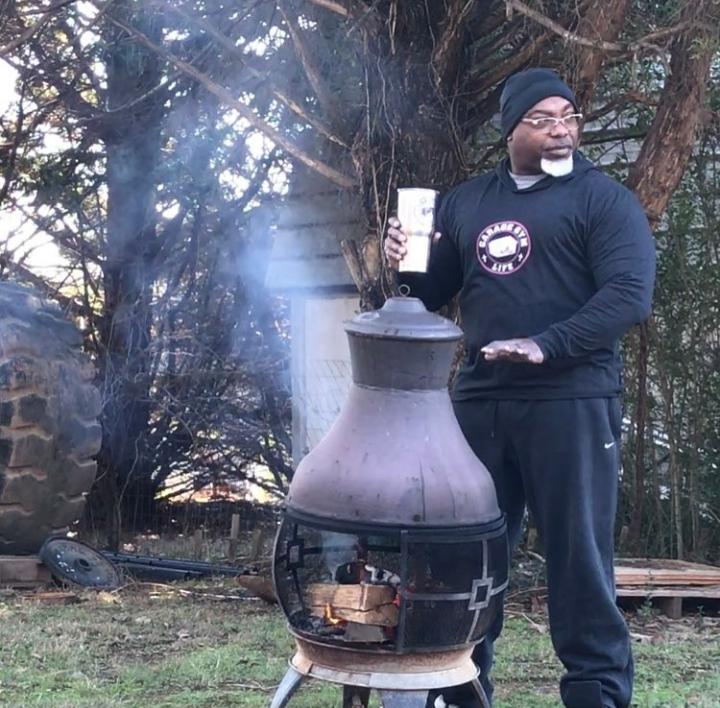
7 minute read
Preparing Your Home Gym for Winter
by Babatunde O. Awoyinka
Cold weather doesn’t have to mark the end of your home workouts even if you train in the garage or shed. Prior to getting to the winter season, you should take the time to review your training plan and modify it appropriately to meet your requirement to stay warm.
Advertisement
Let’s Start with You
Shop for Layers.

It sounds obvious and simple, but it is still important to consider how many layers you will need given the normal temperatures in your area. You want to evaluate your wardrobe with a view to maintaining the flexibility to add or remove layers as necessary easily throughout your training session. As the weather gets colder, you should be adding a long sleeve t-shirt over your normal training clothing; follow that with a crew neck sweatshirt, and as necessary, add a hooded sweatshirt. As for bottoms, you’re going to move to fitted or tight long underwear, and jogger style sweatpants, followed by loose fitting sweatpants. Using this layering strategy has worked out well for me, allowing the addition or removal of layers as needed, and can be adjusted easily for the individual. Moving to your feet— thick wool socks are nice to keep your feet warmer on cold floors. I’ve even worn winter boots on days that didn’t require athletic shoes. Also remember to have a winter hat that will keep you warm and still be comfortable when you work up to a sweat, and consider keeping a pair of mittens or gloves nearby for in between sets. If you start shopping now, you should be able to shop in catalogs that cater to outdoor endurance athletes such as skiers and hikers as both groups need clothing that keeps you warm but wicks away sweat and other unwanted moisture.
Create a Personal Almanac
Provided you have the freedom to do this, monitor the temperature in your gym space throughout the day as the seasons change. You may find for example, that at around 3pm every day, your gym is at its warmest and therefore the best time to get out and train. Keep that in mind as this will allow you to time workouts for the warmest part of the day when practical.
Programming

Working Out in This Takes Planning
Evaluate your training for the upcoming winter to take advantage of the weather situation rather than being a victim of it. For example, in late fall, or early spring, it might be best to add in supersets to have you moving more than normal. Then in the coldest part of winter, you could make your entire session a circuit to keep you in a constant flow to stay warm. This might make it easier for you to enjoy those extra calories around the holidays guilt free. As it warms back up, you could move back to supersets. There are many resources available online regarding supersets and circuits. I’d recommend doing your research ahead of time to find out what fits your goals and programming best.
Warming Tools
Some of these tools are relatively easy to find all year, like hair dryers, but others might not be as readily available once winter hits. Start shopping around now so you can get the best deals instead of settling for what’s left after the outdoor construction crews snatch up the high-quality items!
Hand warmers
You’ll want to grab enough of these to last throughout the winter season. There are various forms of hand warmers; many gas stations and hardware stores carry disposable brands that last a few hours each. Other options include DIY heat packs filled with uncooked rice, corn barley, or even oatmeal sewn into a cloth pouch. These can then be heated in the microwave and brought out to your gym space to keep your hands or equipment warm. If you choose the DIY route, be aware that these will not stay warm as long, so it is helpful to have a few available for use and again if you start now, you will have time to experiment and find out what works best for you.
Hair dryers and Heat Guns
These can be used to effectively heat up the equipment you will need to hold for your workout. A shop heat gun works faster than a blow dryer, but sometimes can leave your barbell or kettlebell a little too hot to touch! These can also be helpful toasting up the gloves you may be wearing between sets. You can obviously find hair dryers at the local Wal-Mart, but a shop heat gun will be available at a home supply store like Lowes, Home Depot or Harbor Freight.
Heating Blankets
A heating blanket can be used to warm your equipment or to drape over yourself between sets on the extremely cold days. Shop around and find one you like best.
Insulate your home gym
Properly installed insulation will keep the heat you are able to generate in your gym space and eliminate cold drafts. Covering up the smallest cracks and gaps can make a huge difference. The process is straightforward and requires minimal tools. You need to first determine what type of insulation you would like. The easiest and least expensive are typically using rolls of insulation batt. For this process, check online for the recommended resistance (R) value for your area of residence and application. You’ll then measure and purchase the insulation batts. Follow the manufacturer’s instructions for installation, typically requiring only personal protective equipment, a utility knife, stapler, and time. You will also want to be sure any doors, exterior and garage doors, are insulated. Most hardware stores carry insulation kits for garage doors, or Styrofoam can be cut to size and glued to the garage door. A final consideration for insulation is the ceiling. If you have open rafters to your roof, you may also want to insulate the ceiling to make the full project worthwhile.
Space Heaters
There are a huge number of styles and heater types to choose from which are dependent on the size of the space you would like to heat, and whether it is already insulated or not (and if you plan to). The first decision you will have to make is if you want to heat your entire space, or just have a heat source nearby your workout area. If you are ok with just a source, a radiant or space heater should do well. This can be used to keep warm next to between sets, or keep a small, immediate area a little warmer throughout the workout. If you opt for heating your full space, you will want to determine the square footage of the area you’re heating. This information will help you to determine what size of a heater you will need. Be sure to pay attention to the requirements of the heater you end up picking out. Most require an additional power line to be run to where the unit will plug in. Some mounted units will also require a natural gas connection and exhaust vent. Other torpedo style will require a propane or kerosene fuel source. In all cases remember to follow manufacturer’s safety recommendations and remember that local ordinances not only affect whether you can have a propane or kerosene heater, but also the availability of fuel for each. Kerosene tends to heat a larger space but propane will burn cleaner and have a less noticeable odor.
Prepare to Relocate
If you train outdoors or in a cold garage, consider preparing a secondary workout space in a space
inside your home. Moving your essential equipment to a temporary, winter space in your home will allow you to continue training without the effort of purchasing heating equipment, bundling up or fighting through the cold. The tradeoff is that you may need to change your winter programming to smaller, portable equipment that fit inside your home. Consider altering your programming in the winter to dumbbells, bands, kettlebells, bodyweight, or other minimal space and equipment styles of training.

Wrapping Up
In all aspects of training, there will always be an element of embracing the suck— cold weather is just another layer. It is important to understand there will be times where you will have to mentally combat your discomfort regardless of how well you feel you prepared. There are many solutions to combat freezing temperatures provided you prepare yourself before the cold weather arrives. By evaluating yourself, programming, available tools, and gym space, you will be rewarded by a successful winter training environment at home.





